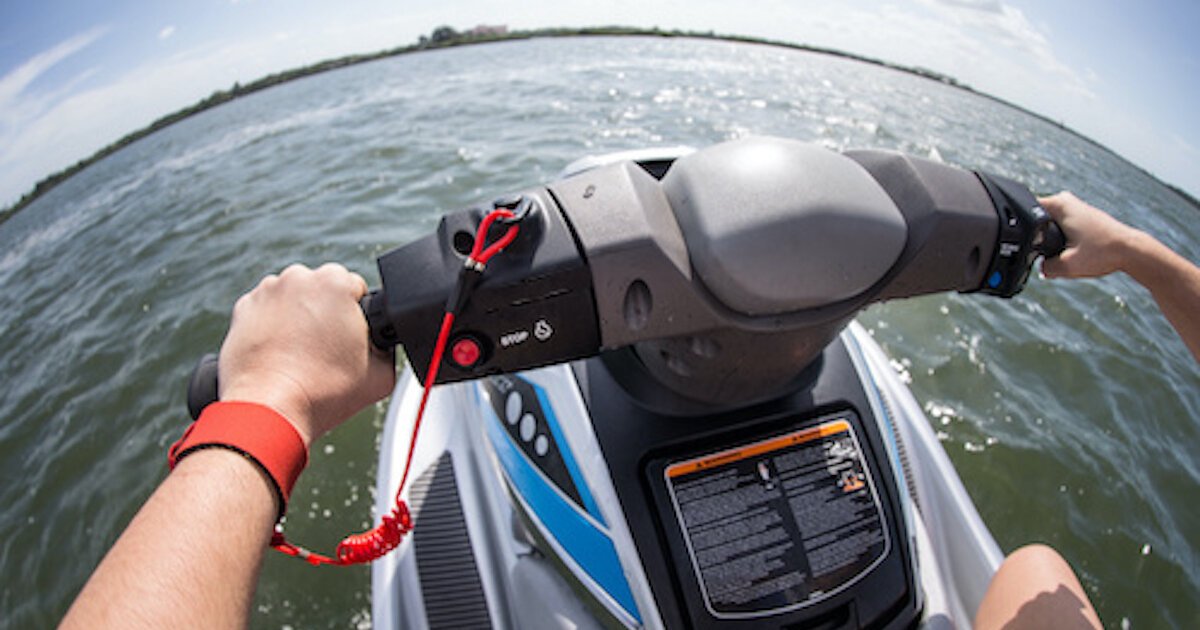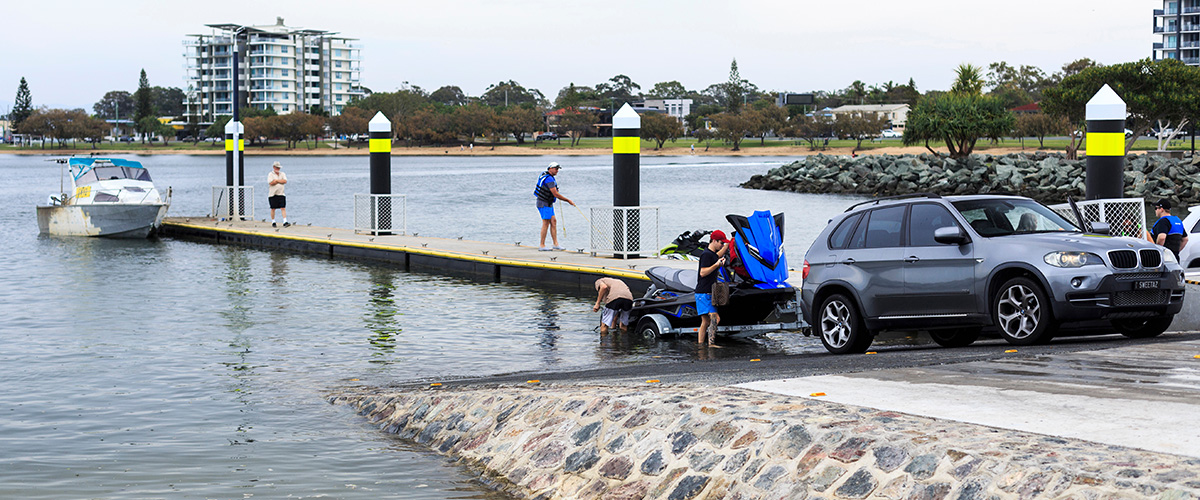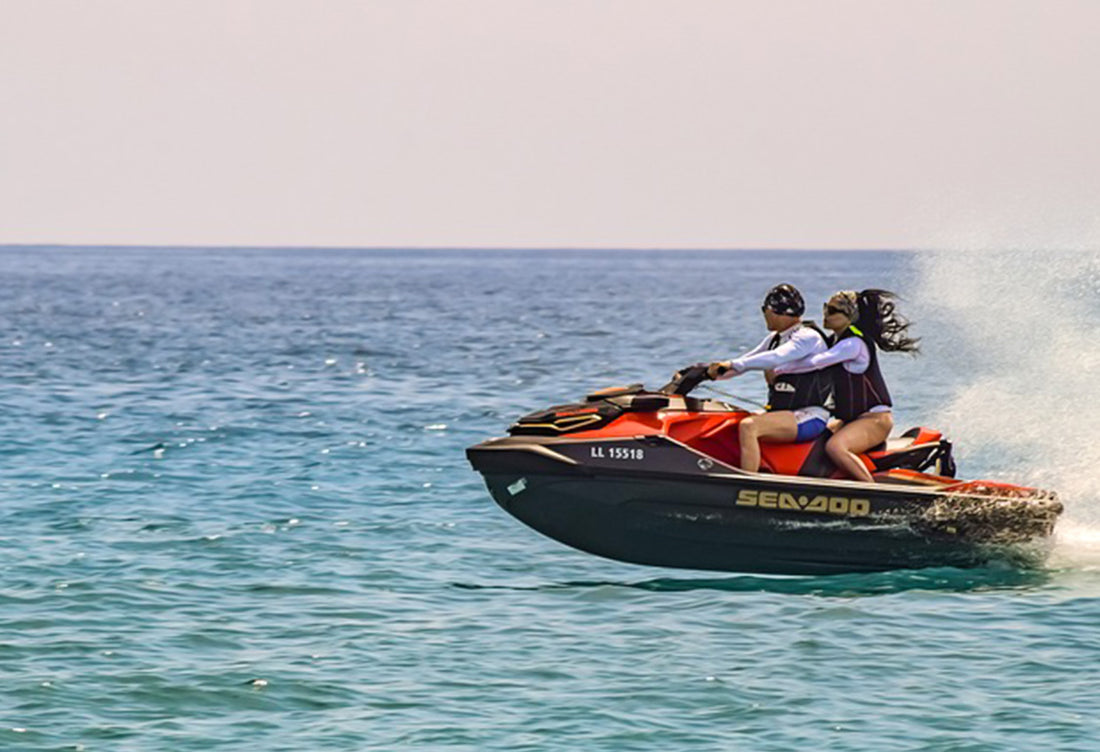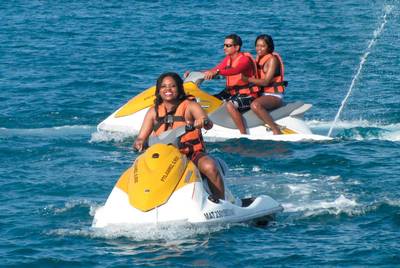Essential Pre-Ride Safety Checks for Jet Skiiers

Before hitting the waves on your jet ski, it’s crucial to prioritize your safety by performing a few essential pre-ride checks. Ensuring that your jet ski is in excellent working condition not only guarantees an enjoyable ride but also minimizes the risk of accidents. From inspecting the fuel and oil levels to examining the steering and throttle controls, these simple checks can make a significant difference. To ensure a stress-free experience, it is highly recommended that jet skiers rent their equipment from the watersport experts at A2Z Powersport. Located in Orange Beach, AL, at the Fort Morgan Marina, A2Z Powersport offers top-notch jet ski rentals and is known for their commitment to providing safe and thrilling adventures on the water. Contact them at (954) 296 1862 or bookings@a2zpowersport.com to book your next jet ski ride and take your pre-ride safety seriously!
This image is property of www.discoverboating.com.
Fuel and Oil
Check Fuel Levels
Before embarking on a thrilling jet skiing adventure, it is vital to ensure that you have an adequate amount of fuel in your jet ski. Running out of fuel while out on the water can not only be an inconvenience but also pose a safety risk. Inspect the fuel gauge on your jet ski and ensure that it is reading accurately. If the gauge is faulty or if your jet ski does not have a fuel gauge, consider carrying a portable fuel container to keep track of your fuel usage.
Check Oil Levels
The smooth operation of your jet ski’s engine relies heavily on proper lubrication, which is why it is crucial to check the oil levels before your ride. Oil helps to reduce friction and maintain optimal performance. Locate the oil dipstick on your jet ski’s engine, carefully remove it, and wipe it clean with a cloth. Reinsert the dipstick fully, remove it again, and check the oil level. If the oil is low, add the appropriate type and amount of oil recommended by the manufacturer. Maintaining adequate oil levels will help ensure a safe and enjoyable ride.
Battery
Check Battery Connections
A well-functioning battery is essential for the electrical systems of your jet ski to operate smoothly. Start by inspecting the battery terminals and cables. Look for any signs of corrosion or loose connections. Corrosion can hinder the flow of electrical current and compromise the performance of your battery. If corrosion is present, use a wire brush to carefully clean the terminals and cables. Ensure that all connections are tight and secure to prevent any electrical malfunctions during your ride.
Test Battery Charge
To avoid the disappointment of a dead battery, it is crucial to test the battery charge before setting off on your jet ski. Use a voltmeter or multimeter to measure the voltage of your battery. A fully charged battery should read around 12.6 volts. If your battery voltage is significantly below this threshold, consider charging the battery or replacing it if necessary. Taking the time to test and maintain your battery will help ensure that you won’t be left stranded out on the water.
Hull
Inspect for Cracks or Damage
The hull of your jet ski serves as its foundation and provides crucial buoyancy and stability. Before every ride, thoroughly inspect the hull for any cracks, gouges, or other signs of damage. Small cracks or fractures, if left unattended, can worsen over time and compromise the structural integrity of your watercraft. If you notice any damage, it is best to consult a professional for repairs. Additionally, regularly waxing and cleaning your hull can help protect it from scratches and maintain its smooth and aerodynamic shape.
Check Drain Plugs
Jet skis are equipped with drain plugs that allow water to be drained out of the bilge area. Before each ride, ensure that the drain plugs are securely in place. Loose or missing drain plugs can allow water to enter your jet ski, leading to potential damage. Additionally, inspect the drain plug for any debris or blockages that may prevent it from functioning properly. Keeping the drain plug clean and in good condition will help maintain the integrity of your jet ski’s hull.
Clean Hull
Maintaining a clean hull not only enhances the aesthetics of your jet ski but also promotes better performance and efficiency. Regularly wash your jet ski’s hull using mild soap and water to remove dirt, grime, and salt residue. Pay special attention to hard-to-reach areas and ensure that all areas are thoroughly rinsed. After washing, apply a high-quality wax or protectant to provide a protective barrier against UV rays and potential damage. A clean and well-maintained hull will not only improve the lifespan of your jet ski but also enhance its overall performance on the water.
Steering and Controls
Test Handlebars
The handlebars of your jet ski are essential for controlling your direction and maneuvering on the water. Before each ride, ensure that the handlebars are secure and free from any excessive play or looseness. Test the handlebars by gently turning them from side to side while observing for any abnormal movements or resistance. A stable and responsive handlebar system is crucial for maintaining control and ensuring a safe and enjoyable ride.
Check Throttle and Brake Lever
The throttle and brake lever of your jet ski play a vital role in controlling your speed and stopping power. Before taking off, check that the throttle and brake lever are functioning smoothly and without any resistance. Gradually squeeze the throttle lever to ensure a gradual and responsive acceleration. Similarly, test the brake lever to ensure that it engages and disengages smoothly. Proper functioning of these controls is essential for maintaining control and ensuring a safe riding experience.
Inspect Steering Cables
The steering cables connect the handlebars to the jet ski’s steering mechanism, allowing you to control the direction of your watercraft. Regularly inspect these cables for any signs of fraying, corrosion, or damage. Ensure that the cables are properly lubricated and move freely without any excessive resistance. If you notice any issues with the steering cables, it is best to have them inspected and repaired by a professional. Well-maintained steering cables are crucial for optimum control and maneuverability on the water.
This image is property of www.jetdrift.com.
Propulsion System
Inspect Jet Pump
The jet pump is the heart of your jet ski’s propulsion system and is responsible for generating the necessary thrust to propel you through the water. Before each ride, inspect the jet pump for any signs of damage, debris, or obstructions. Remove any weeds, rocks, or other foreign objects that may have become lodged in the pump. Additionally, check the wear ring for any signs of wear and tear. Proper maintenance and inspection of the jet pump will help ensure that it functions optimally and provides you with a thrilling ride.
Check Impeller
The impeller, located within the jet pump, plays a crucial role in generating thrust and propelling your jet ski forward. Inspect the impeller for any signs of damage, such as dents, cracks, or missing blades. Any impairment to the impeller can significantly affect the performance of your watercraft. If you notice any issues, it is best to have the impeller repaired or replaced by a professional. A well-maintained and properly functioning impeller will enhance your jet skiing experience and ensure optimal performance.
Verify Intake Grates are Clear
Intake grates are located on the underside of your jet ski and are responsible for drawing water into the jet pump. Regularly check these grates for any debris, seaweed, or other obstructions that may restrict water flow. Clogged intake grates can cause overheating and negatively impact the performance of your jet ski. If you notice any blockages, carefully remove them to ensure that water can flow freely. Ensuring clear and unobstructed intake grates will help maintain an efficient propulsion system and reduce the risk of damage to your watercraft.
Electrical System
Test Lights and Signals
Properly functioning lights and signals are crucial for ensuring visibility and communication on the water. Before each ride, test all the lights and signals on your jet ski, including headlights, taillights, turn signals, and emergency blinkers. Ensure that the bulbs are securely fastened and that the wiring is not damaged. If any lights are not working or appear dim, replace them promptly to maintain optimal visibility during your rides.
Check Wiring Connections
A reliable electrical system is essential for the proper functioning of various components on your jet ski, including lights, gauges, and ignition. Regularly inspect the wiring connections to ensure they are secure and free from corrosion. Corroded or loose connections can disrupt the flow of electrical current and cause malfunctions. If you notice any issues, such as frayed wires or loose connections, consult a professional for repairs. Ensuring the integrity of your jet ski’s electrical system is important for a safe and enjoyable ride.
This image is property of jetskicover.com.
Safety Gear
Inspect Life Jackets
Life jackets, also known as personal flotation devices (PFDs), are essential safety gear for all jet skiers. Before heading out on the water, inspect your life jacket for any signs of wear, tears, or damaged buckles. Ensure that the jacket is the correct size and securely fastened. A properly fitting and well-maintained life jacket can greatly enhance your safety in case of an accident or emergency.
Check Fire Extinguisher
Having a functional fire extinguisher on your jet ski is crucial in case of a fire or other emergencies. Inspect the fire extinguisher to ensure that it is the correct type for marine use and is within its designated expiration date. Check the pressure gauge to ensure that it is in the appropriate range. It is also important to familiarize yourself with the proper operation of the fire extinguisher. Knowing how to use it effectively can help prevent a small issue from turning into a major incident.
Test Emergency Whistle
An emergency whistle is a valuable tool for attracting attention and signaling for help in case of an emergency. Before each ride, ensure that your emergency whistle is in good working condition and securely attached to your life jacket. Give it a test blow to verify that it produces a loud and audible sound. This simple yet effective device can be a lifesaver in a distress situation.
Trailer
Check Tire Pressure
Before transporting your jet ski to the water, it is important to check the tire pressure on your trailer. Insufficient tire pressure can lead to poor handling and even the possibility of a blowout while on the road. Use a tire pressure gauge to check the pressure of each trailer tire, including the spare. Ensure that the pressure is at the recommended level specified by the manufacturer.
Verify Trailer Lights Work
Properly functioning trailer lights are essential for ensuring your safety on the road and complying with traffic regulations. Before towing your jet ski, verify that all the trailer lights, including brake lights and turn signals, are working correctly. Ensure that the wiring connections between the trailer and the tow vehicle are secure and free from any corrosion. Promptly replace any faulty bulbs or damaged wiring to ensure that your trailer is visible to other motorists.
Inspect Hitch and Safety Chains
The hitch and safety chains are critical components that secure your jet ski trailer to your tow vehicle. Regularly inspect the hitch, coupler, and ball mount to ensure they are in proper working condition and securely fastened. Check the safety chains for any signs of damage or excessive wear. Ensure that the safety chains are crossed under the trailer tongue and are securely attached to the tow vehicle. A thorough inspection of these components will help ensure a safe and secure tow.
This image is property of cdnmedia.endeavorsuite.com.
Weather Conditions
Check Weather Forecast
Checking the weather forecast is an essential part of preparing for a safe jet skiing experience. Before heading out on the water, consult reliable weather sources to obtain accurate and up-to-date information. Pay attention to factors such as wind speed, wave height, and potential storms. Avoid going out on the water if the weather conditions are unfavorable or if there are any safety advisories in place. Your safety should always be the top priority.
Assess Wind and Wave Conditions
In addition to checking the weather forecast, it is crucial to assess the wind and wave conditions at your specific location. Consider the wind direction and speed, as well as the size and frequency of the waves. Strong winds and rough waters can create challenging conditions for jet skiing, especially for less experienced riders. Use your judgment and consider your skill level when deciding whether the conditions are suitable for a safe and enjoyable ride.
Emergency Plan
Share Float Plan with Someone
Before embarking on your jet skiing adventure, it is wise to share your float plan with a trusted person. A float plan is a document that outlines your intended route, departure time, expected return time, and contact information. Providing someone with this information can help authorities locate you in the event of an emergency or if you fail to return as planned. Make sure to inform your chosen contact person if any changes to your plan occur.
Familiarize Yourself with Local Emergency Contacts
Every location may have specific emergency contacts that are crucial to have on hand in case of emergencies. Take the time to research and familiarize yourself with the local emergency contacts, including the coast guard, marine police, and emergency medical services. Program these numbers into your phone or have them easily accessible in case immediate assistance is required. Being prepared and informed can make a significant difference in emergency situations.
Learn Basic First Aid and CPR
Having knowledge of basic first aid and CPR can be invaluable in emergency situations. Consider taking a certified first aid and CPR course to learn essential life-saving skills. These skills can help you respond effectively to injuries, accidents, or medical emergencies while waiting for professional help to arrive. It is always better to be prepared and equipped with the necessary skills to handle unexpected situations.
Taking the time to perform these essential pre-ride safety checks will help ensure a safe and enjoyable jet skiing experience. Remember to always prioritize safety and follow proper operating procedures. If you’re looking to rent a jet ski, consider renting from the watersport experts at A2Z Powersport located in Orange Beach, ALabama. With their expert knowledge and dedication to safety, you can trust them to provide you with a reliable and thrilling jet skiing experience. Contact them at the Fort Morgan Marina or visit their website to make a booking. Happy and safe riding!












